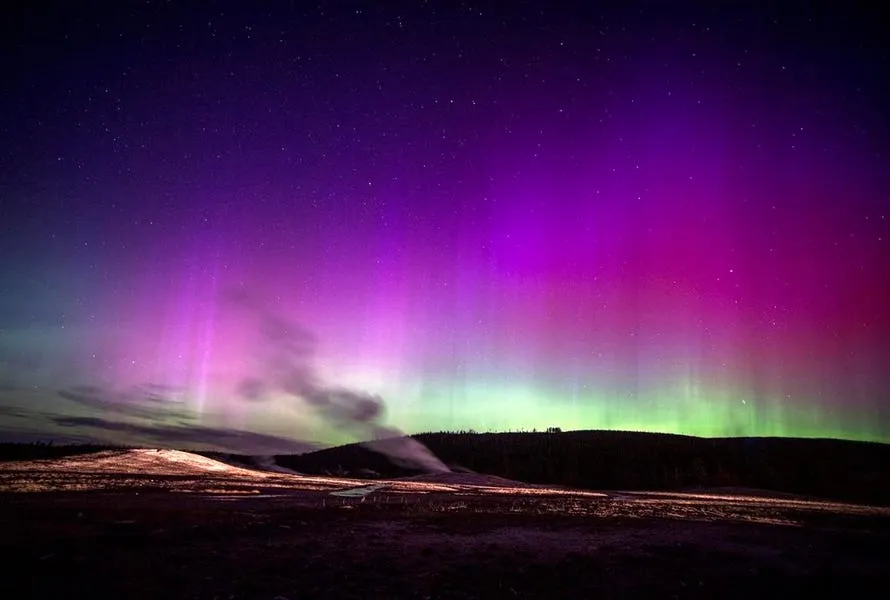Forbes contributors publish independent expert analyses and insights.
The Northern Lights may be visible in the U.S. tonight and through the week, according to the National Oceanic and Atmospheric Administration's Space Weather Prediction Center, which is predicting enough geomagnetic activity for the aurora to be potentially glimpsed from as many as 15 U.S. states on Wednesday, June 4.
It comes in the wake of a rare G4 geomagnetic storm that lit up June skies worldwide last weekend, with vivid auroras visible after a "fast halo CME" sparked dazzling Northern and Southern Lights far from polar regions.
The latest forecast has a G1 geomagnetic storm tonight as soon as it gets dark in North America. "Migratory animals are affected at this and higher levels; aurora is commonly visible at high latitudes (northern Michigan and Maine)," according to NOAA, though its aurora view line has the phenomenon potentially visible from parts of 13 states.
U.S. states that could potentially see aurora, according to NOAA, include Washington, northern Idaho, Montana, northern Wyoming, North Dakota, South Dakota, Minnesota, northern Iowa, Wisconsin, northern New York, northern Vermont, northern New Hampshire and northern Maine.
Regions far from light pollution and with a dark northern horizon are likely to get the best views.
According to NOAA's forecast, the Kp index -- which provides a rough guide to the intensity of aurora displays -- may reach 5, seeing the auroral oval stretch farther south than is typical. Kp 5 equates to a G1-class geomagnetic storm. For a Kp in the range of 3-5, the aurora can be "The aurora will move further from the poles, it will become brighter, and there will be more auroral activity (motion and formations). If you are in the right place, these aurora can be quite pleasing to look at," according to NOAA.
However, anything can happen -- as it did last weekend. According to NOAA's space weather forecasters, "Unsettled to G1 (Minor) geomagnetic storming is expected on 04-05 Jun as CME effects transition into HSS activity." That refers to a coronal mass ejection -- a burst of charged particles from the sun traveling through space and striking Earth's magnetosphere -- and high-speed streams of solar wind. "Quiet to active levels are expected on 06 Jun as HSS influence persists," added NOAA's forecast.
Predicting the onset of aurora is very difficult. Aurora-hunters should check NOAA's 30-minute forecast or use the Glendale App for up-to-the-minute forecasts. Both services use data from NASA's DSCOVR and ACE satellites, which orbit about a million miles out and measure the solar wind's speed and magnetic intensity. They give a roughly 30-minute warning of aurora displays.
The Northern Lights are caused by the solar wind, a stream of charged particles from the sun interacting with Earth's magnetic field. Its charged particles accelerate along the magnetic field lines toward the polar regions, where they collide with oxygen and nitrogen atoms, exciting them and causing them to release energy as light.
It may be that tonight's aurora is visible on camera only. Luckily, today's smartphones are ideal for capturing images of even faint aurora, which generally look white to the naked eye. If your smartphone has a "Night Mode" feature, use it. Remember to use your primary lens, shoot in raw (if available) and use a small tripod (or support your phone on something still).
